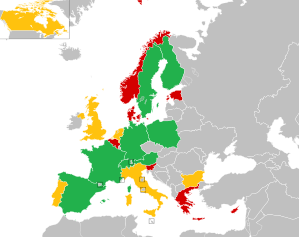Eurovision Young Dancers 1993
| Eurovision Young Dancers 1993 | |
|---|---|
| Dates | |
| Semi-final | 13 June 1993 |
| Final | 15 June 1993 |
| Host | |
| Venue | , , Sweden |
| Presenter(s) |
|
| Host broadcaster | Sveriges Television (SVT) |
| Interval act | Documentary about the dancers that did not make it to the final |
| Participants | |
| Number of entries | 15 |
| Debuting countries | |
| Returning countries |
|
| Withdrawing countries | |
| Vote | |
| Voting system | A professional jury chose the finalists and the top 3 performances |
| Winning dancers |
Zenaida Yanowsky |
The Eurovision Young Dancers 1993 was the fifth edition of the Eurovision Young Dancers, held at the in , Sweden on 15 June 1993. Organised by the European Broadcasting Union (EBU) and host broadcaster Sveriges Television (SVT), dancers from eight countries participated in the televised final. A total of fifteen countries took part in the competition. Estonia, Greece, Poland and Slovenia made their début with Austria returning and Bulgaria, Italy, Netherlands, Portugal and Yugoslavia withdrawing from the contest.
As in 1989 and 1991, a semifinal was held to choose the finalists. The semifinal took place 2 days before the final (13 June 1993). The jury chose the finalists and top 3 performances. The prizes were presented by Princess Christina, the youngest sister of Carl XVI Gustaf, King of Sweden.
The non-qualified countries were Belgium, Cyprus, Finland, Italy, Norway, Portugal and Yugoslavia. Zenaida Yanowsky of Spain won the contest, with Switzerland and Austria and France placing second and joint third respectively.
The in , Sweden, was the host venue for the 1993 edition of the Eurovision Young Dancers.
The format consists of dancers who are non-professional and between the ages of 16–21, competing in a performance of dance routines of their choice, which they have prepared in advance of the competition. All of the acts then take part in a choreographed group dance during 'Young Dancers Week'.
Jury members of a professional aspect and representing the elements of ballet, contemporary, and modern dancing styles, score each of the competing individual and group dance routines. Once all the jury votes have been counted, the two participants which received the highest total of points progress to a final round. The final round consists of a 90-second 'dual', were each of the finalists perform a 45-second random dance-off routine. The overall winner upon completion of the final dances is chosen by the professional jury members.
...
Wikipedia


